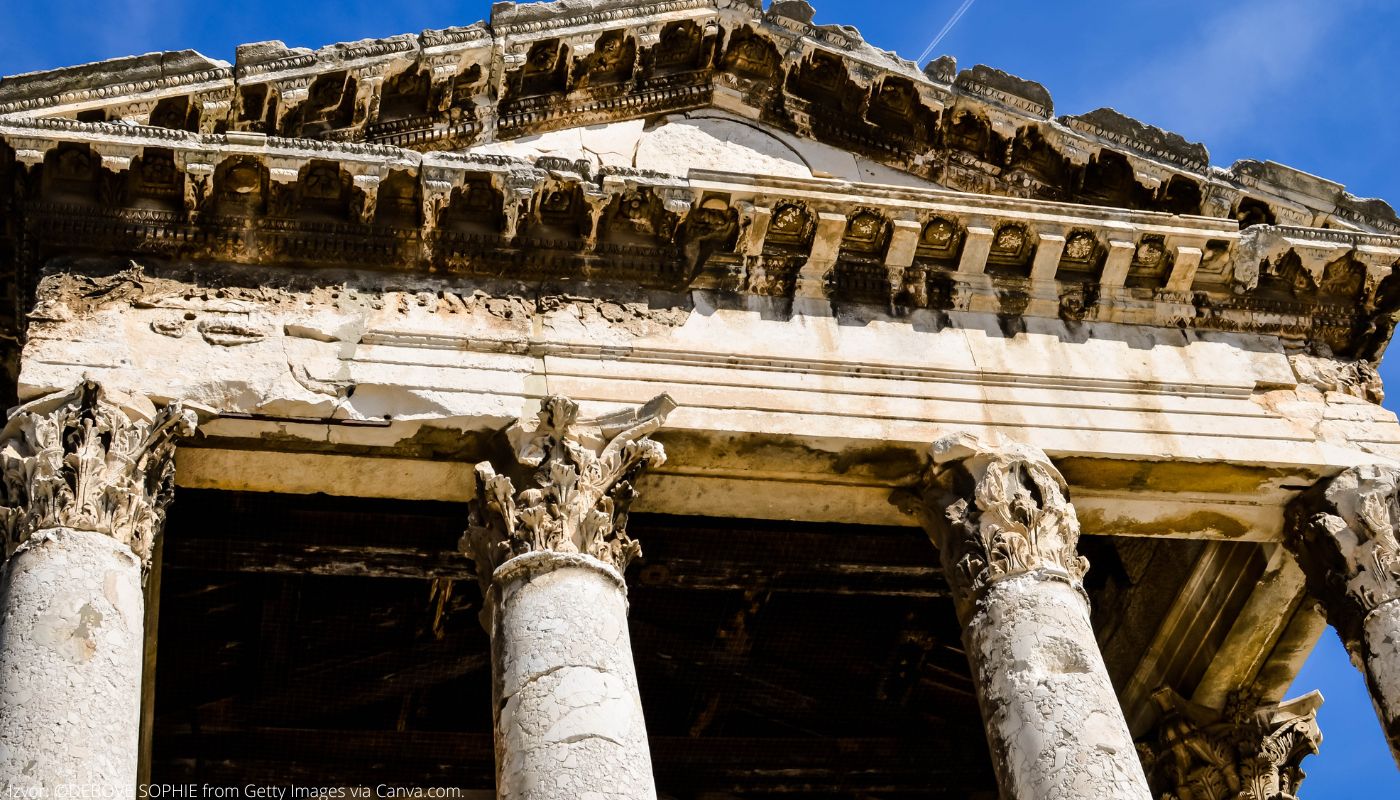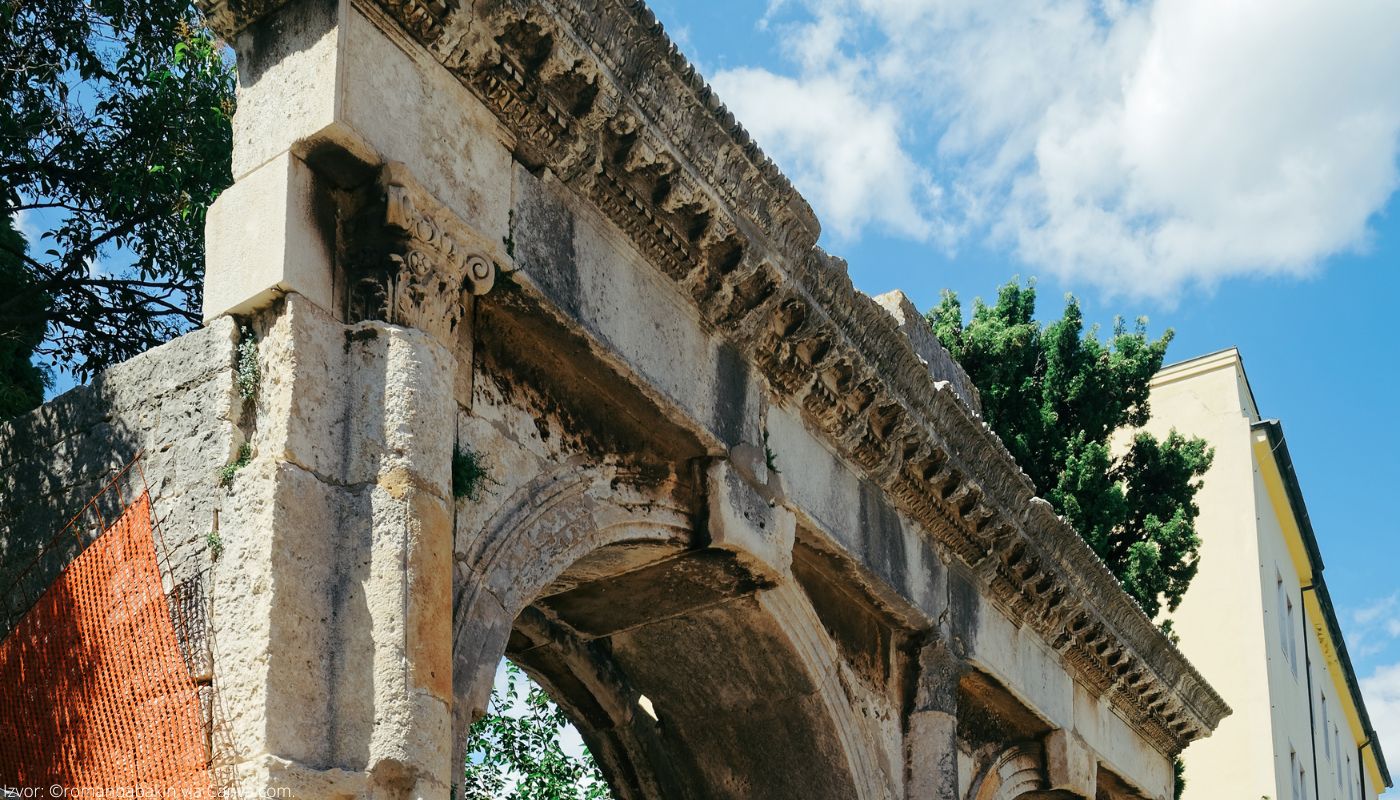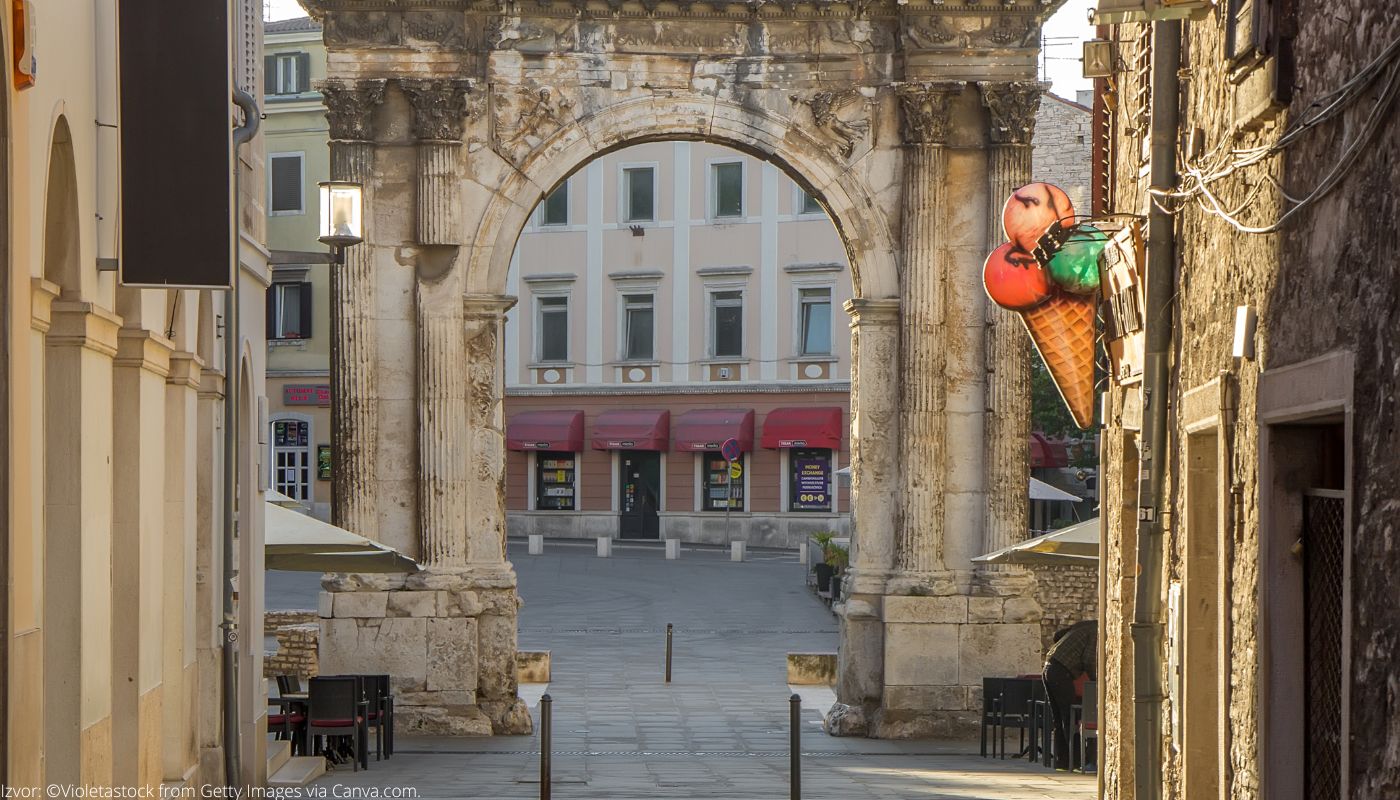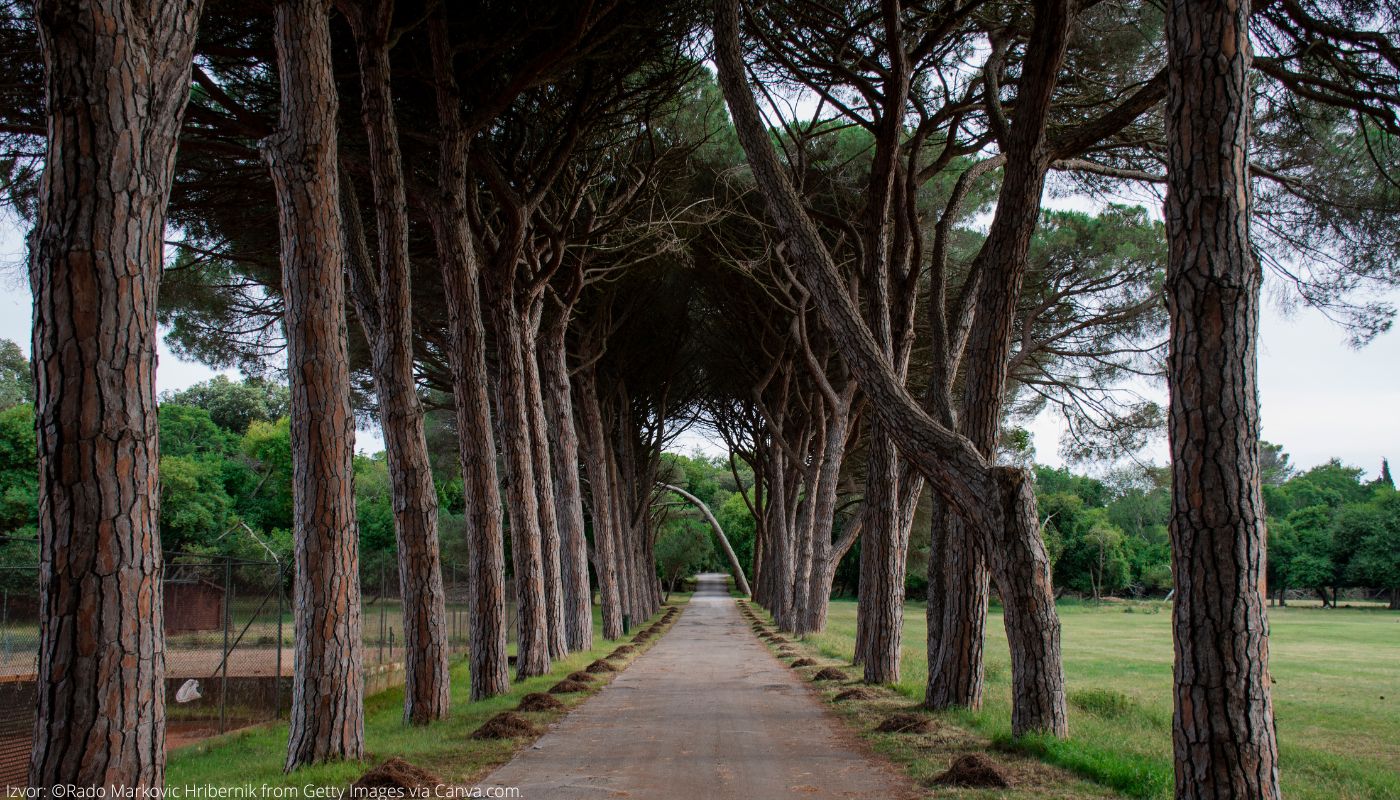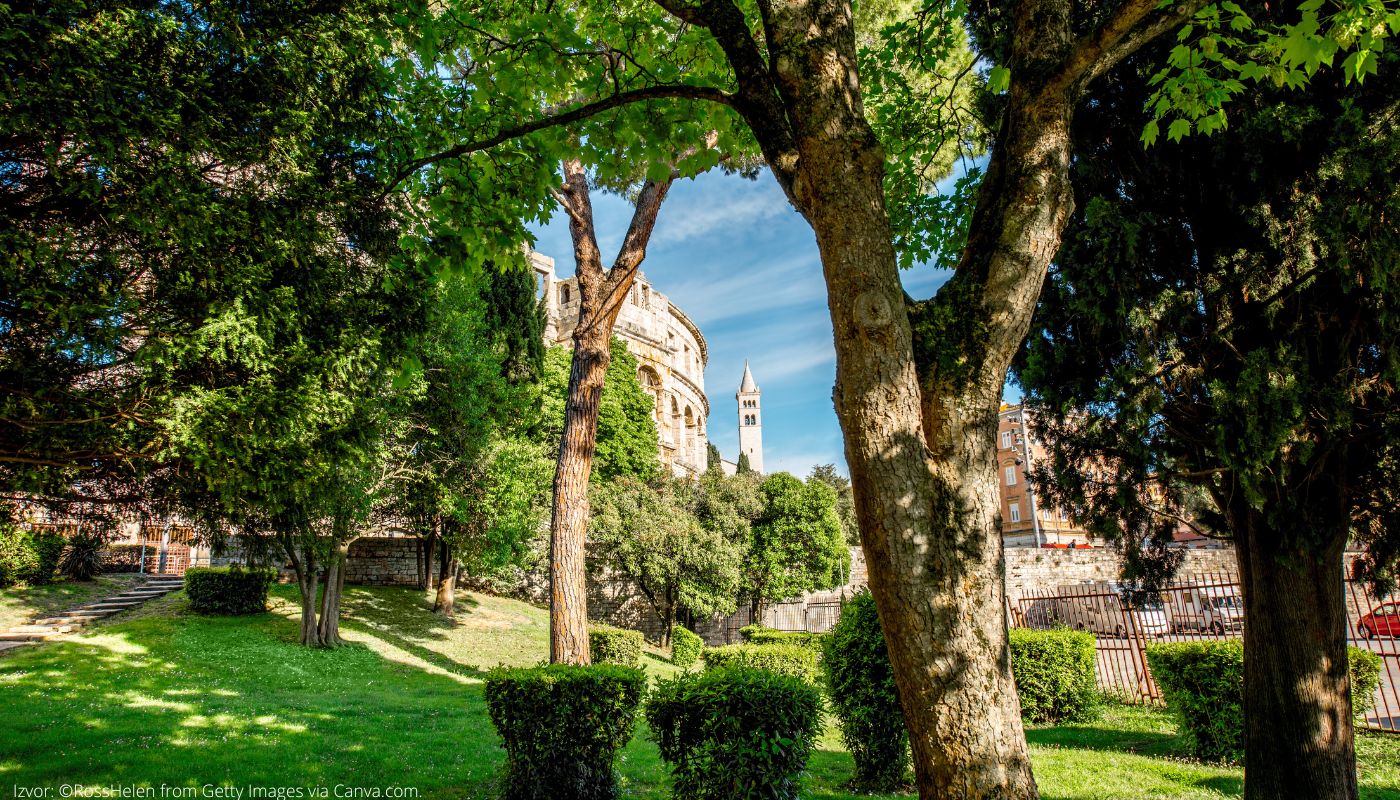When to visit Pula?
- During spring - The city known for its parks blooms in early spring, and the pleasant weather is suitable for visiting all the sights, for a walk by the sea or getting to know the nature near the city. In this period, the crowds are not that intense, so your stay can be more pleasant.
- During summer - A large number of tourists come to Pula every year during the summer season to enjoy the sun and clean water. Regardless of whether you like sand, stone, or gravel, you will find the ideal beach for you, the offer is vast. During the summer, visitors are also attracted by music and film festivals.
How to get to Pula?
- By car - If you are coming from the direction of Belgrade, go to the Batrovci border crossing, take the E-70 highway to Zagreb, and then the E-65. After passing Rijeka, take the E-751 highway to Pula. From the direction of Vienna, you can follow the E59 via Graz to Maribor, then join the E57 highway to Ljubljana. From Ljubljana, take the E61 and E751 highways to the Dragonja border crossing, and from there, the E751 highway will take you to Pula.
- By bus - In addition to regular departures from other cities in Croatia and some European cities during the summer season, a large number of buses also go to Pula from Munich, Frankfurt, Vienna, Belgrade, Sarajevo, and Ljubljana, as well as many other cities in Europe. The price of a one-way bus ticket from Belgrade is about 60 euros, from Vienna about 35 euros and from Budapest about 40 euros.
- By boat - Arriving by boat to the port of Pula is possible as part of one-day trip deals from the port of San Basilio in Venice, where it is possible to buy a one-way ticket and leave and return on the same day.
- By plane - About 5km from Pula, there is an international airport with many flights in and out of the country. The price of a return plane ticket from Belgrade or Rome starts at 500 euros, while plane tickets from London are twice as cheap.
Activities for tourists in Pula
- Swimming - What attracts tourists to this Croatian city in the first place is swimming in clear sea water and sunbathing on one of the famous beaches. The offer is versatile, from the Hawaiian beach, which gives the impression of being in exotic places, to beaches near bars that are suitable for young people, all the way to beaches such as the Grotte von Pula Beach - a mysterious and peaceful place to relax by the waves.
- City tour - You can spend a day in Pula visiting the sights by walking through the narrow streets. The city has ancient buildings, the most famous of which is the Arena from the 1st century AD. There is also an open-air Roman theater; although only parts have been preserved, its importance is unquestionable. Be sure to visit the Pula Cathedral, which is believed to have been a place of secret religious gatherings. If you want to feel the spirit of the city, take a walk through the market, fresh fish and local vegetables fill every stall, and the shopping experience will take you back many years.
- Exploring nature - The city is characterized by greenery, but in its surroundings, you will also find an exceptional archipelago where untouched nature thrives, surrounded by clean seawater. Only two kilometers from the city center is the Šijan Forest, where you can walk along narrow paths, enjoy the forest flora, and maybe even an animal will surprise you. And if you decide to stay in the city, there are numerous parks, the most beautiful of which are the Park of the City of Graz and Monta Zaro.
Events and festivals in Pula
- Outlook festival - This 5-day festival is ideal for reggae music lovers. It is held in the fortress on the Štinjan peninsula, while the opening ceremony occurs in the Pula Arena.
- Pula Film Festival - It represents the 65-year-old tradition of the city and is held in several locations, of which the Arena is the most famous and most visited.
- Seasplash festival - Similar to the Outlook festival, it is also held on the Štinjan peninsula. During the 4 festival days, a special bus service was organized from Pula to the Punta Christo fortress and back.
- Monte Paradiso - 30 years old punk festival. It started as a group of young people who gathered in an abandoned fortress and performed their music, and now it takes place in the Rojc community center.
Activities for kids in Pula
- Aquarium Pula - It is located in the old fortress of Verudela. In addition to watching numerous fish from all over the world, educational content is also offered. There is also a center for recovering injured turtles within the aquarium. The outdoor part where the freshwater fish are kept is arranged as a picnic area so that you can relax there.
- MEMO Museum Pula - It is dedicated to the way of life between the 50s and 80s Thanks to exhibits such as the well-known fica, the youngest can feel for a moment what life was like during communism.
- Luminous giants - The name is given to the illuminated Pula cranes in the port that are part of the still active shipyard. During the summer, they are illuminated until midnight, and thousands of color combinations make for a great show.
What to see in Pula?
- Pula Arena - This is the current name of the amphitheater that was started during the reign of Augustus about 2000 years ago. Today, numerous events and festivals are held there.
- Temple of Augustus - Represents a Roman temple built in the 1st century AD. It was initially dedicated to the goddess Roma, and its purpose changed with historical changes. Under the Byzantine administration, it was turned into a church, and thanks to that act it survived to this day. Now it houses an exhibition of ancient sculptures.
- Zerostrasse - During the First World War, the population of this city was in fear due to the exceptional military importance of their port. This is how digging these tunnels and passages under the Pula hills, which intersect in the middle, began. This area is open for visits and events today, so if you ever get bored of Pula, go on an adventure below it.
- Kaštel Fortress - It was built in the 17th century and houses the Historical and Maritime Museum of Istria today. It is known for its beautiful view of Pula, and the entrance to the fortress is paid.
Accommodation in Pula
- Hotels - Numerous hotels in Pula offer overnight accommodation to tourists. The cheapest hotel rooms for two people cost around 100euros, but if you want to wake up in a hotel with a view of the beach, the minimum price is around 200euros per night. The listed prices refer to the summer season, while the rest of the year's accommodation is significantly cheaper. The best-rated hotels are Boutique Hotel Oasi and Park Plaza Arena Pula.
- Apartments - Even in the height of the season, a night in an apartment is twice as cheap as a hotel room. Prices of 40euros per night in apartments a few kilometers from the beach and around 60euros for those on the beach are ideal for those who want to save money but not give up a perfect vacation.
Phone numbers of important services
- Help services - 112
- Police - 192
- Roadside assistance - 1987 (For calls from abroad and from mobile phones +385 1 1987)
- Ambulance - 194
- Tourist info center - +385 52 219 197
- Pula Airport - +385 52 550 926
Where to eat in Pula?
- For local specialties such as octopus salad and ravioli stuffed with seafood or truffles, visit the Stari grad 02 or Cajun restaurants.
- For everyday meals such as pasta or chicken, restaurants Boccaporta and Alighieri are ideal.
- For a meal with a view, visit the Konoba More restaurant, located at the Pula viewpoint, serving seafood.
Where to go out in Pula?
- Spending time on the beach - Besides enjoying the waves, Valseline Beach is also known as a party hotspot. After sunbathing, you can come back here and dance to the DJ when it gets dark.
- For dancing - All the best popular tunes can be heard in Stella Club Pula. It is about half an hour's walk from the city, but if you like to have a good time, you won't regret it. Crazy parties, dancing, and quality drinks await you.
- A heated atmosphere with broadcast matches can be found in the Bounty pub. It is decorated in a retro style and represents a piece of England in the middle of Pula.
Transportation and taxi in Pula
- Public transport - Public transport in Pula consists of buses that connect all parts of the city well. You need to buy a ticket, which can cost you from around 1.5 to around 3.5 euros.
- Taxi services - Taxi services are numerous and can offer you a ride at affordable prices. Some of the best-rated are Cheap Taxi Pula (+385 97 635 2300) and City Taxi Pula (+385 97 738 2222)
Parking in Pula
- Zone 1- 708521
- Zone 2- 708522
- Zone 3- 708523
- Zone 4- 708624
- Zone 5- 708625
Surroundings of Pula
- Brijuni - This National Park consists of 14 smaller and larger islands in the Adriatic Sea. Trips to Brijuni are organized by boat. You can swim on the marked beaches, see a 1600-year-old olive tree, dinosaur footprints, and the remains of a Roman villa and the Church of St. Mary. There is also a Safari Park where you can see ostriches, finches, and albino peacocks, as well as an unreal Mediterranean garden.
- Cape Kamenjak - Besides offering many catering establishments, this nature park is known for its wild and hard-to-reach beaches. You can embark on long walks or exciting adventures of discovering hidden beaches there.
History of Pula
- Roman period - Although the city was founded on the hill of Kastel about 3000 years ago, the first traces of its existence date from the period of Roman rule. At that time, it was called Colonia Pietas Iulia Pola.
- The arrival of the Slavs - In the 7th century, this area was inhabited by Croats. In the following centuries, the city did not develop significantly but was used for transit due to its good position on the sea. After epidemics of plague and other diseases in this area, the number of inhabitants decreased to around 600.
- The 20th century is a period of constant government changes in this city. After the severe damage it suffered in the Second World War, it finally started to recover and turned into today's widely known tourist center.
Geography and climate of Pula
- Geographic features - Pula is located in the southwest of the Istrian peninsula. The average altitude is 30. It was created and developed in the bay, at the foot of and over seven hills. The area of the city is 5165 ha, one-fifth of which is on the sea.
- Climate - A Mediterranean climate characterizes this coastal town. Summers here are extremely sunny and warm, ideal for swimming, and winters are incredibly mild. The average temperature during the year is 13.2 degrees Celsius, while the water temperature varies depending on the season from 7 to 26 degrees.
Demographics of Pula
- Number of inhabitants - According to the results of the 2011 census, the number of inhabitants in this region is 75,500, which represents 1.336% of the total population of Croatia.
- Population structure - More than 70% of the population are Croats. About 64% of respondents declared themselves to be of the Catholic religion.
Tradition and culture of Pula
- The wine tradition of Pula - This place has been known for years for producing excellent wines. Domestic white, black, and rosé wines, dry, sweet, and semi-sweet wines, are made in more than ten wineries. This tradition is celebrated by the Vinski grad festival when dozens of producers from Istria present their products.
- Shipbuilding tradition - This city on the sea has a long history of shipbuilding, and its favorable position important in transit, made its ports busy centuries ago.
- Fishing - Since ancient times, people on the sea coast have been catching fish, which they used for food. The situation is quite different today, but some cities, such as Pula, have preserved the tradition. Even today, in the local markets that maintain the town's spirit, you can buy fresh fish from fishermen and merchants who earn their living this way.

















